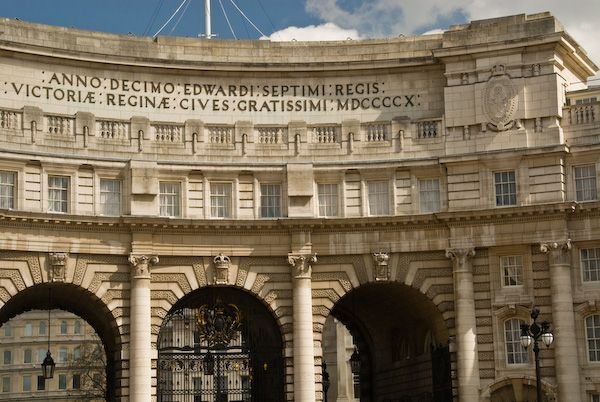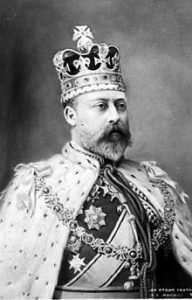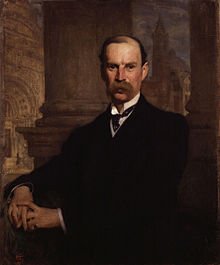
Admiralty Arch in London with its Roman numerals
Admiralty Arch is a prominent landmark in London, England, situated at the eastern end of The Mall. It was commissioned by King Edward VII (reign: 1901-1910) in memory of his mother, Queen Victoria (reign: 1837-1901), and completed in 1912.
The arch features distinctive Roman numerals on its façade, marking the years of Queen Victoria’s reign from 1837 to 1901.

Admiralty Arch was commissioned by King Edward VII in memory of his mother Queen Victoria. Image: King Edward VII
Additionally, there is a Latin inscription on the arch that reads “ANNO DECIMO EDWARDI SEPTIMI REGIS VICTORIÆ REGINÆ CIVES GRATISSIMI MDCCCCXII,” which translates to “In the tenth year of the reign of King Edward VII, to Queen Victoria, from most grateful citizens, 1912.”
As Edward VII died in 1910, he did not live to see the completion of Admiralty Arch, which was completed in 1912.
Admiralty Arch serves as a grand entranceway to the ceremonial route leading to Buckingham Palace.

Sir Aston Webb – the British architect who designed Admiralty Arch in London
Location
Admiralty Arch is located at the eastern end of The Mall, a famous street in central London. It is surrounded by notable landmarks such as Trafalgar Square, Buckingham Palace, and St. James’s Park.
Why was a nose placed at Admiralty Arch?
If you pass through the arch at the northernmost end, you’ll notice a peculiar feature resembling a human nose. This nose was placed there in 1996 by artist Rick Buckley as a form of social protest against what he called the ‘Big Brother society’. Positioned approximately seven feet above the ground, the nose is at waist height for someone on horseback.

The Nose at Admiralty Arch, London, was installed by an artist called Rick Buckley to draw people’s attention to issues such as a “Big Brother” society and the thought police
Other interesting facts about Admiralty Arch

With the facts below, World History Edu sheds more light on the architectural, historical, and symbolic importance of Admiralty Arch in London:
- Admiralty Arch was designed by London-born architect Sir Aston Webb (1849–1930) and completed in 1912. Construction of the arch was carried out by the John Mowlam Company, a firm that used to be one of the largest civil engineering and construction firms in Britain. It serves as a gateway to The Mall, leading to Buckingham Palace.
- The arch holds an iconic place in British history and often features prominently during ceremonial occasions, including royal weddings, coronations, and other important British events. For example, a procession took place at the arch when curtains closed on the London 2012 Summer Olympic Games.
- It’s become tradition that the central archway of the Admiralty Arch be used only by royalty.
- Originally built as a ceremonial entrance to the nearby Buckingham Palace, the arch now houses government offices and residences. It is adorned with Corinthian columns and features three archways.
- The name “Admiralty Arch” refers to its proximity to the former Royal Navy’s headquarters at Admiralty Building. The arch served as a ceremonial entrance for members of the Royal Navy.
- The arch is adorned with a number of statues, including two seated figures representing Navigation and Gunnery, sculpted by English sculptor Sir Thomas Brock (1847-1922).
- In recent years, Admiralty Arch has undergone restoration and transformation into a luxury hotel and private residences, under the permission of the Westminster City Council. The project aimed to preserve the historical and architectural significance of the building while providing modern amenities.
- While the interior of Admiralty Arch is mainly private, the public can enjoy the view of the arch from the outside. It serves as an iconic symbol of London’s architecture and history.
























